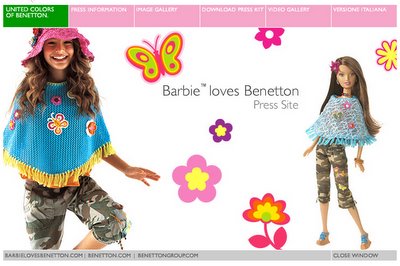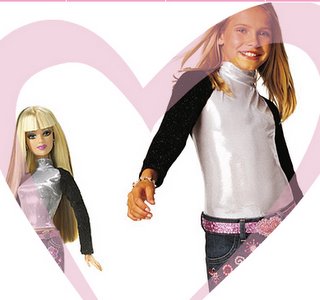
Here is something spicy from an area I haven't been paying much attention to - fashion.
I have received the above picture from Maryla Sobek, a friend who teaches at the Fashion School of the UQAM university (huge French-speaking university in Montreal, Canada). The picture, by Anne Marie Sauriol (a student at the university), was going to be a poster for the graduation fashion show (roughly translated, the sign on the side states "Honoring Fashion").
And all hell broke loose.
The director considered it a scandal. Something horribly vulgar and absolutely unacceptable. My friend suggests that the younger generation has a different sensibility, and might see this as a provocation, but not necessarily as a vulgar offense.
There is a large group of people that still find the phrase "fuck you" extremely offensive. Sarah Lucas is not one of them. The amateurs of Sarah Kane's dramaturgy are not among them either. People who experiment don't get offended. They might get bored. Or disappointed. And to me that is more of a risk here.
Bored, because we've seen the middle finger so many times it really isn't anything special.
Disappointed, because we might be expecting something we won't necessarily see on the show.
Now here is my counterargument on both points:
1) This doesn't bore me. Because it has a twist. The thimble - the cap, the condom, the hat, the head, the dot over the 'i', the filter, the creator. The sublimation. The humorist. The hidden treasure. It says "now that I got your attention, come here".
2) Something else this picture says is "We're fed up. And that's our beginning." Which raises expectations. One feels like saying "If you're so tough on everyone else, you better be good". And that's a pretty dangerous zone. Easy to lose.
3) Or is it? I'm not sure the poster is really a statement. It could be seen more as an artsy PR work, Benetton-style. As we know, in its most controversial (and talked about) posters, Benetton chooses topics not necessarily related to the issues it is directly involved with. Rather, it says "we see what you see. we feel what you feel." It speaks to its target group by using empathy. We could say a similar thing is happening here: the students themselves would not be offended by this sort of a poster; it is too common. Just think of all the t-shirts with "bad bitch" written on them. Anyone studying fashion must be aware of what is happening in social behavior, and I suppose it is a good idea to use it, answer it, and then, if you really really want to be an artiste, defy it. So, if this is a statement, I would say it isn't a positive one in the sense that it doesn't actually affirm anything, but rather appeals to a negative attitude that is already present in the public. And then, it uses it, associating itself with the street punk attitude.
Then again, students still have more experience as consumers than creators. So their creation can also be seen as a reaction of a fashion consumer. To what? Well, take Benetton, the edgiest fashion label publicity-wise. The 18-to-20-something year olds of today (including myself) weren't only brought up on Benetton's "ideals". We see the hypocrisy: Benetton had no problem going from this:
to this:
and finally to this:
 (2006)
(2006)What are we left with? How can a designer still have ideals, if those ideals are used by marketing specialists in a totally arbitrary way, as it suits the moment? Maybe someone got tired of selling pink dreams and black, satin fairy tales with android proportions? So what is there left to say, what is there left to fight for or invent? I hope, a lot. But just as we needed Artuad's senseless screams to get to a new form of theater, as we needed Cage's silence to get to new music, so in order to get to some fresh, original ideas from time to time we might need a middle finger stuck up high. Hopefully, with a thimble on top.

Technorati:
Tidak ada komentar:
Posting Komentar